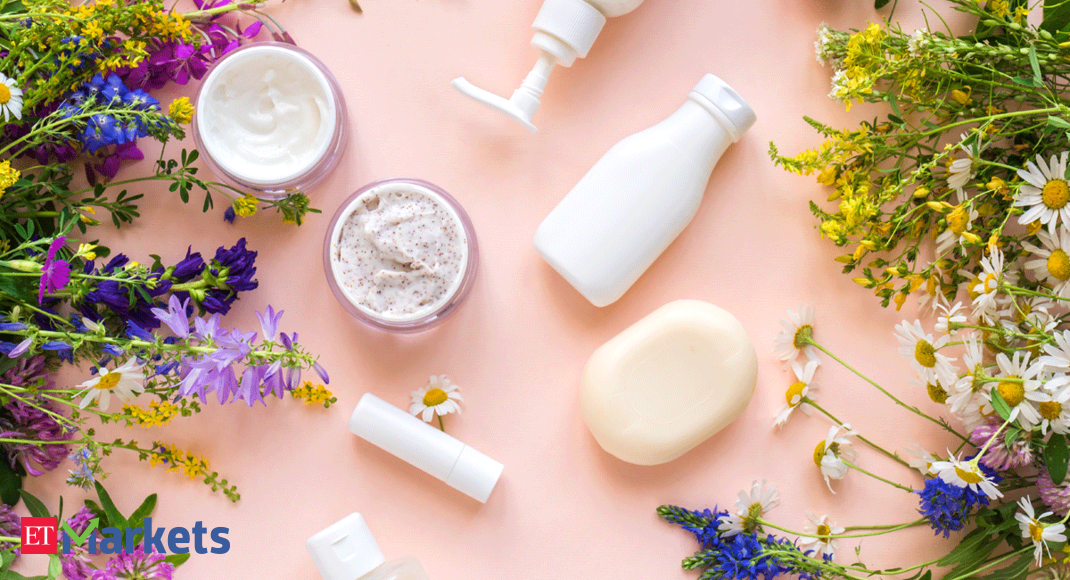NEW DELHI: Bajaj Consumer Care’s March quarter profit more than doubled on a 40 per cent-plus sales growth. But rising raw material (RM) costs and an adverse product mix hurt gross margins, a trend that may continue in the June quarter. Analysts said the company’s execution has improved under the new CEO with a focus on product refresh, sharper marketing and distribution, visibility in retail and growing non-ADHO (Almond Drop Hair Oil) portfolio. The revival in dividend distribution trend is positive, they said, and added that the current valuation for the stock is undemanding and it could be up for a rerating.Despite rallying 85 per cent in the last one year, shares of Bajaj Consumer Care are down 40 per cent for the past three years. Analysts are willing to value the stock at 20-23 times FY23 EPS compared with 15 times valuations it commands currently.Trapped Value?ICICI Securities said Bajaj Consumer is a case of ‘trapped value’ and not a ‘value trap’. It likes the company’s renewed thrust on product relaunch, integrated campaign, thrust on digital and improved brand visibility across retail outlets and focus on categories beyond ADHO, such as Amla, gooseberry besides initiatives for market share gains through distribution expansion.The brokerage has increased its earnings estimates for the hair oil maker by 6 per cent for FY23. It has revised the price target for the stock to Rs 400 from Rs 350 earlier, valuing it at 23 times March FY23 EPS.”After a few years of slower expansion of the hair oil category, growth has started to pick up. Baking in the sectoral revival and Bajaj’s steady improvement, we are raising the target valuations to 20 times from 15, which yields a revised price target of Rs 350 against Rs 260 earlier,” Edelweiss said.Bajaj Consumer Care reported over two-fold growth in consolidated net profit at Rs 54.67 crore for March quarter compared with Rs 23.29 crore reported for the year-ago quarter. Revenue from sales of goods was higher at Rs 244.86 crore compared with Rs 172 crore reported for the same quarter last year.Covid ImpactThe company achieved the highest-ever value market share print of 11.1 per cent in the total hair oil market during January-February with gains in both Almond and Amla hair oil categories. For the hair oil category, growth in the urban market was down 3 per cent YoY, but up 6.2 per cent in the rural market.Kotak Securities said the demand for the company was robust at the start of the ongoing quarter. The Covid-led restrictions are currently evolving, leading to some operating issues in the urban areas. However, the company is not facing any disruption in the rural markets for now. For ADHO, larger packs are doing better.The company said it is focused on new launches with more modern trade retailers. It said the pace of new launches is expected to accelerate going forward with focus on premium launches on e-commerce channels and mass-range launches in the general trade channel.For the March quarter, ad spends as a percentage of sales came in at 17.6 per cent compared with 19.2 per cent in December quarter and 28.6 per cent in the March quarter of last year. Rise in raw material costAnalysts said the company’s gross margin contracted 700 bps YoY (down 280 bps QoQ) to 61.3 per cent during the quarter due to broadbased inflation in all raw material prices, unfavourable product mix and one-off inventory write-off. The company took a price hike of 2.5 per cent in February and March, which partially mitigated the raw material inflation. But it may still impact June quarter margins. “A further price hike is under consideration and will depend on the evolving demand scenario,” Antique Stock Broking said. Dividend payoutThe follow-on dividend of Rs 4 per share surprised many. It took the total dividend for the year to Rs 10, resulting in a total payout for FY21 at 66 per cent. This was lower than the 100 per cent payout seen in FY18 and FY19, but decent when compared with a payout of 16 per cent in FY20.Two–thirds the profit has been paid out as dividend this time and future dividends are expected to be somewhere in this range. Data showed the company has paid Rs 8-9 per share average dividend in the last 10 years.“The positive trend on use-of-cash coupled with diversification efforts bearing initial fruits should help sustain the re-rating trend seen in the stock in recent months,” it said.ICICI Securities said the final dividend has further allayed investor concerns over cash utilisation.
Read more: economictimes.indiatimes.com
